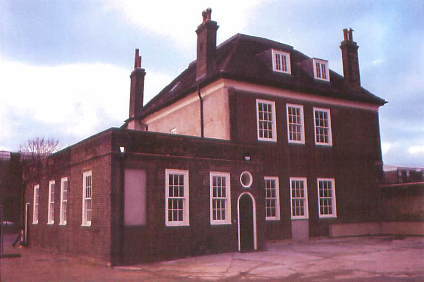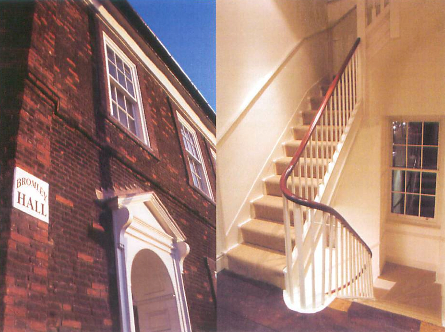Give examples of up to three projects you have undertaken
TRP is a specialist practice in the conservation and adaptation of historic buildings. We are able to support your organisation in developing applications for funding, including Heritage Lottery. We are regularly included in consultant lists prepared by English Heritage put forward to potential clients.
To enable you to assess the best approach for your needs, we offer costed Option Studies including potential renewable energy sources and lifecycle cost analysis. Thereafter, we are able to supply a full architectural service including Planning and Listed Building applications, working drawings, specifications and competitive tendering. We pride ourselves on thorough historical research at the outset, and effective project management on site to control the quality, costs and the delivery of your project.
As a practice, our established reputation for award winning conservation work is tempered by extensive experience in new build architectural and commercial schemes, and a special expertise in renewable energy technologies.
 The restored Manor House
The restored Manor House
The major challenge was maintaining the ‘farm quality’ of the site while introducing a significant intensification in use. We did this by creating a wildflower meadow in front of the barn using minimal lighting levels and by locating all pedestrian pathways outside this Meadow. Where new interventions were required we respected the sometimes crude farm detailing. Underneath the walled Gardens, an extensive ground source heating system has been installed harvesting energy to heat the complex in Winter and to dump excess heat in Summer.
Webpage:
http://www.highhouseproductionpark.co.uk/heritage/
Awards: High House Farm won the RICS East of England Award for Building Conservation, the RICS East of England Award for Regeneration, the RICS Project of the Year Award, the RTPI Award for best Heritage, Arts, Culture & Sport project in the UK and the British Association of Landscape Industries National Award for Soft Landscaping Construction.
 The wildflower meadow the Great Barn at night with minimal safety lighting
The wildflower meadow the Great Barn at night with minimal safety lighting
Bromley Hall, Bromley-by-Bow, London
Bromley Hall was built around 1490 by Henry VII as a hunting lodge at the upper tidal limit of the River Lea where the Royal Court would dismount and return to Greenwich Palace by barge on the tide. The original form of the building, reconstructed from archaeology and is shown in an article at:
http://ihbc.org.uk/context_archive/95/latham/Paul1.htm
Our brief for Leaside Regeneration was to conserve the building and upgrade the services to create offices. As part of our approach we respected a large flat roofed southern extension which formed an important part of the ‘story’ the building had to tell. It was built by the Royal College of St Katherine in 1928 when the building was a children’s hospital. Removal of the extension would have damaged the Tudor walls and compromised sustainability by loss of lettable floor space. Its retention was not only the right conservation approach but provided additional space for offices, toilets and service cupboards.
Thermographic surveys revealed hidden doorways which we were able to conserve. We discovered and conserved numerous important Tudor paint sequences underneath hard cement render applied in the 1950’s when the building was in use as offices for a garage.
Awards: Bromley Hall won the prestigious RICS London Region Award for Building Conservation and received Europa Nostra awards special mention.
 Bromley Hall after conservation, c1928 extension (left) conserved to that period
Bromley Hall after conservation, c1928 extension (left) conserved to that period
 Tudor brickwork, 18c doorcase and windows Regency balustrade and 18c stairway conserved
The Concrete House, Lordship Lane, South London
Tudor brickwork, 18c doorcase and windows Regency balustrade and 18c stairway conserved
The Concrete House, Lordship Lane, South London
In 1868, Charles Drake patented his ‘Concrete Builder’, the world’s first system using iron shutter plates and slotted iron verticals enabling continuous vertical casting of a concrete wall, exactly the same principle as modern 'slip form' concrete construction today. 549 Lordship Lane was Drake's own house, built no doubt as a show-piece for his new system. To court wider acceptability for his invention, he chose a conservative Gothic style.
When we commenced the project the house was a ruined shell after determined attempts by the previous owner to encourage its collapse. Only the outside concrete walls survived and these were open to the elements. The porch, east bay window and half the roof had collapsed.
After detailed analysis, Drake’s walls and Gothic mouldings were replicated. Where possible, original mouldings were cut away and remounted on repaired fabric. The Porch was recovered from 11 separate pieces buried on site and carefully repaired. The robbed street railings were recast from Mac Facfarlane's 19c Castings Catalogue to the original design. A Victorian ‘wild garden’ has been re-created using plants and trees with 19c origins. The house has been conserved and restored for the Heritage of London Trust Operations Ltd providing five affordable flats for a local housing association.
Awards pending completion.
Paul Latham's article
Restoring Drake’s concrete house
from Context 130 - July 2013
 Project nearing completion May 2013
Project nearing completion May 2013







